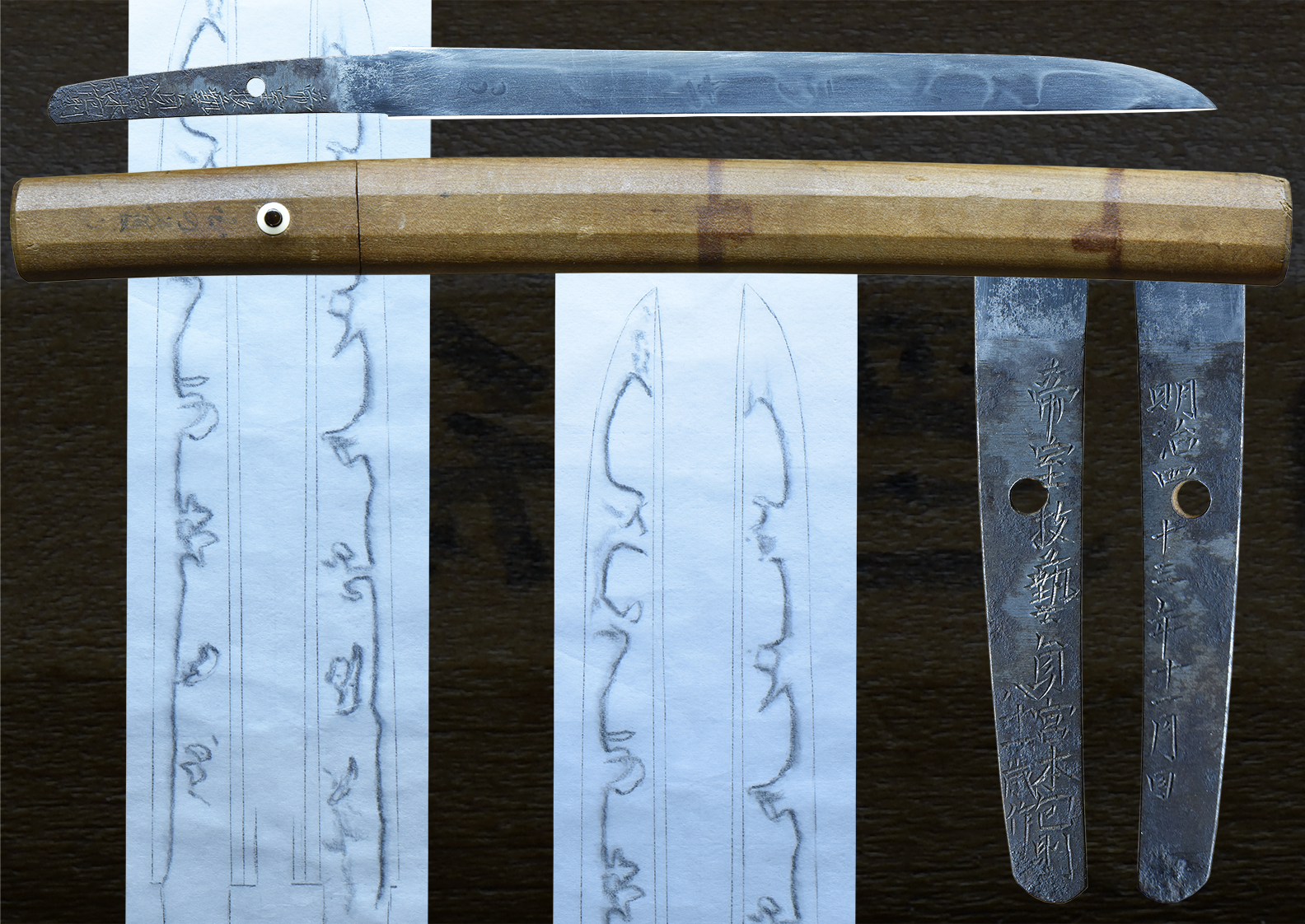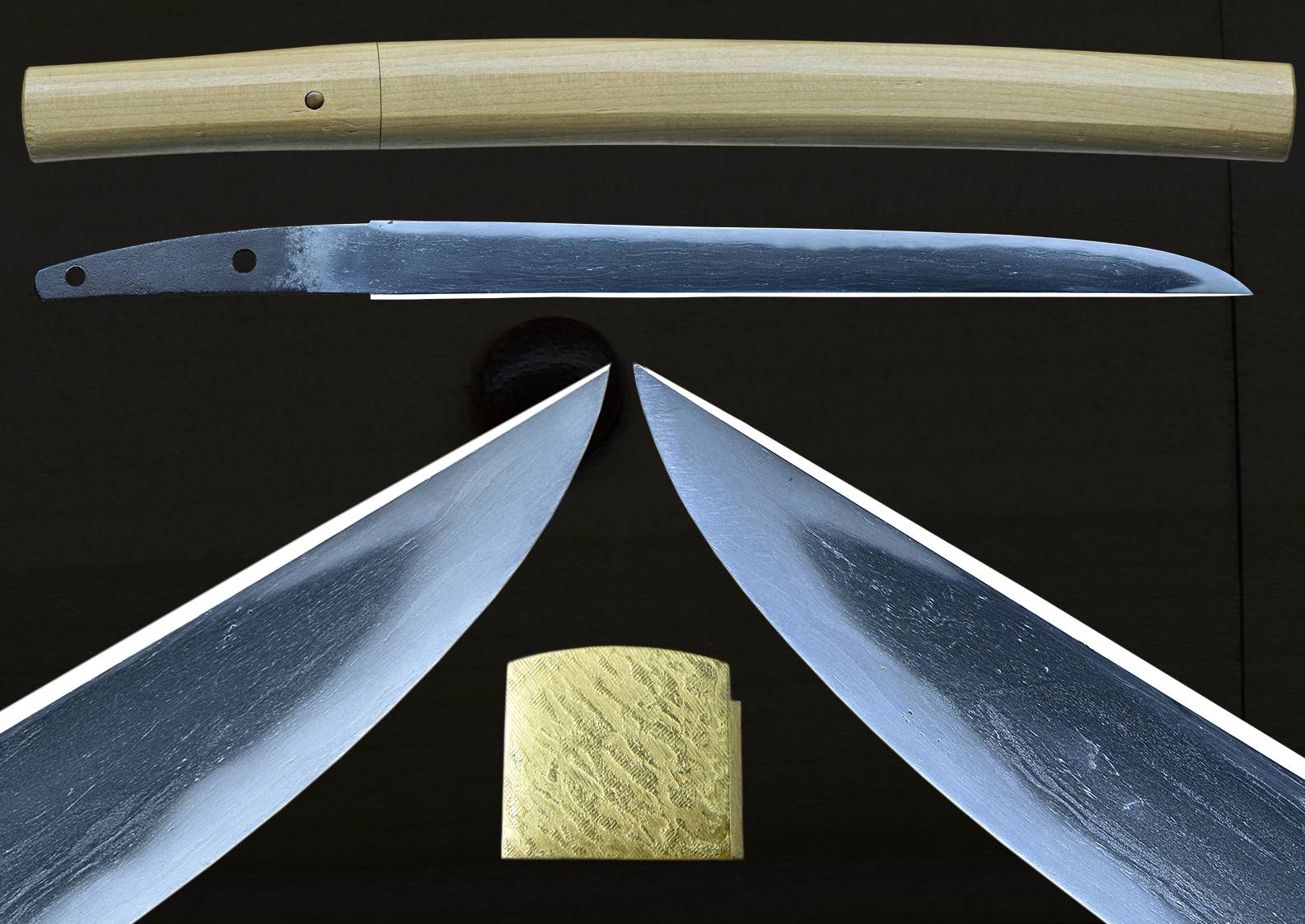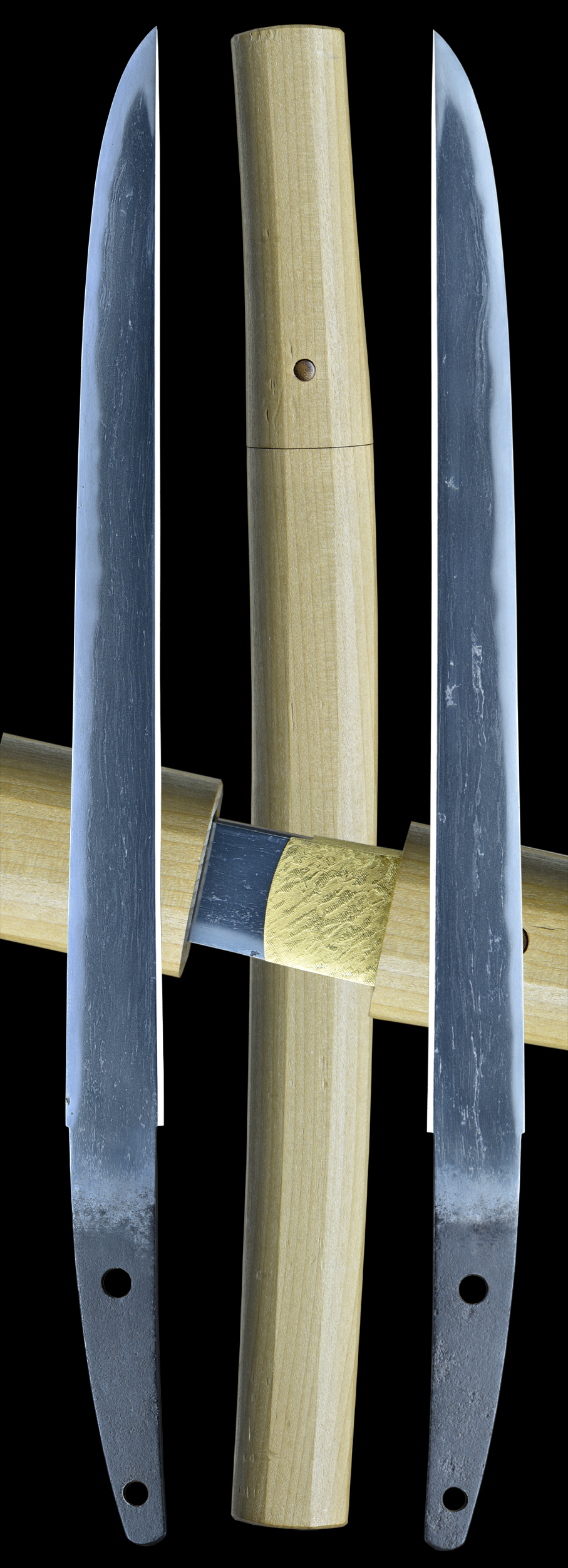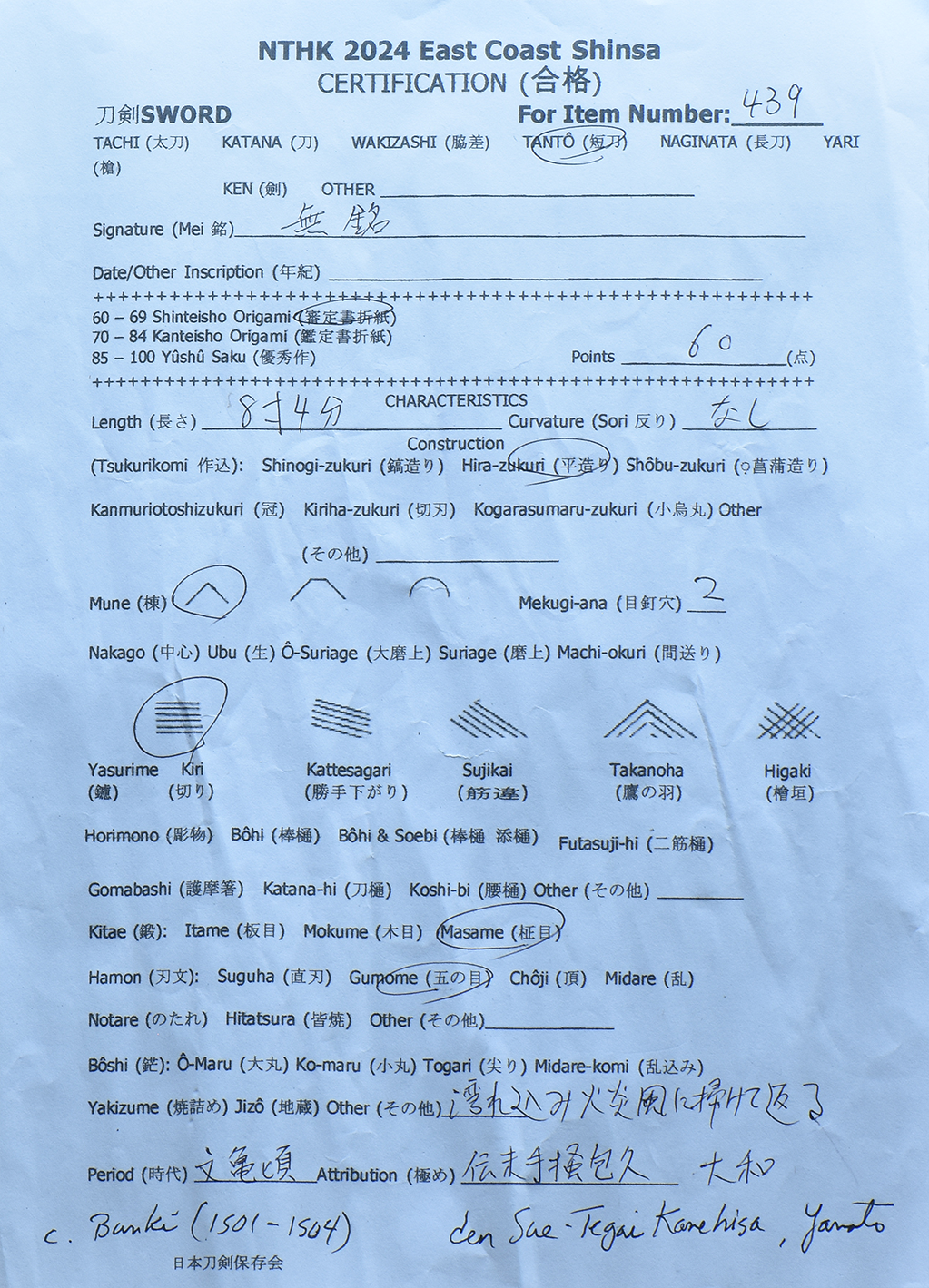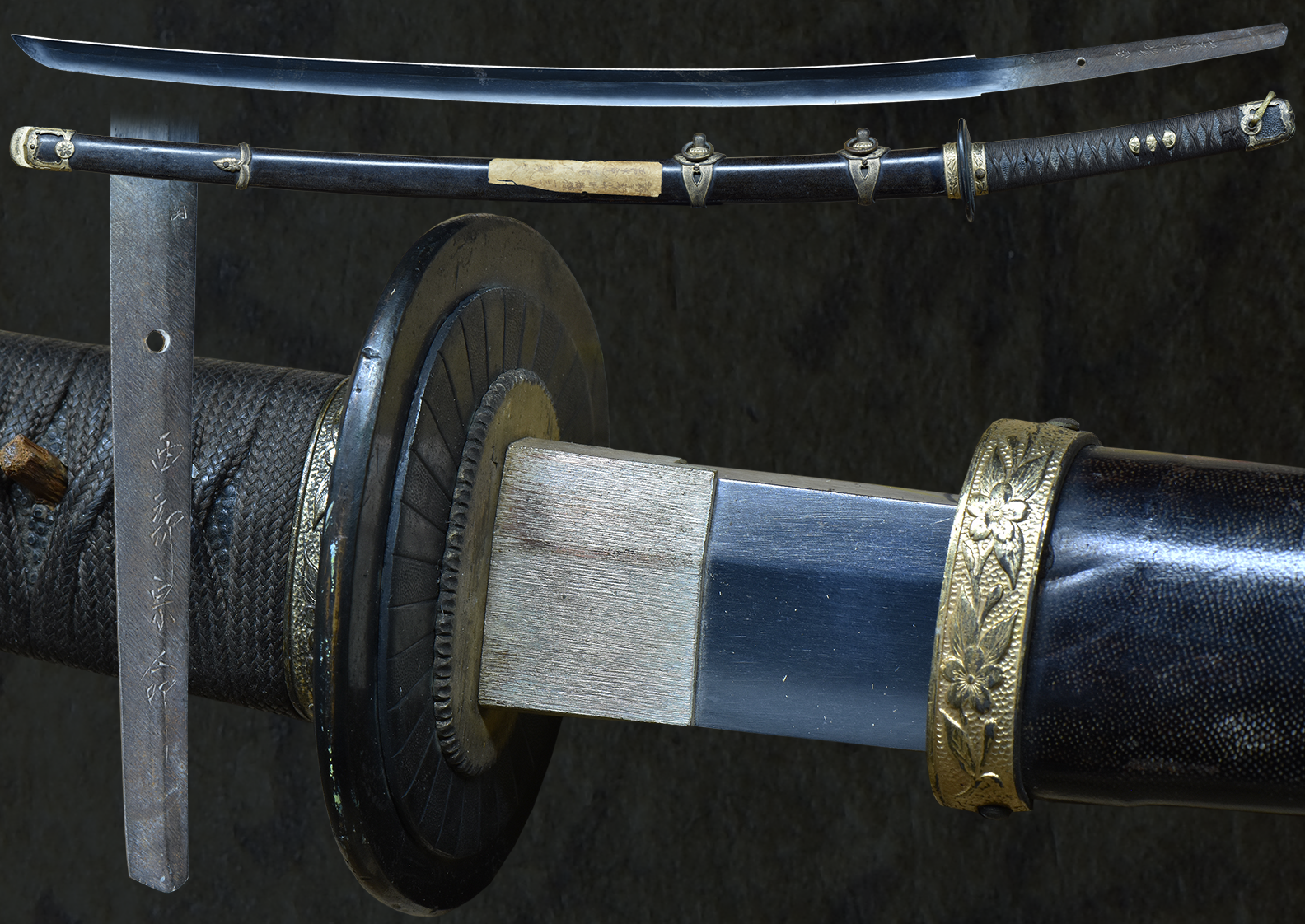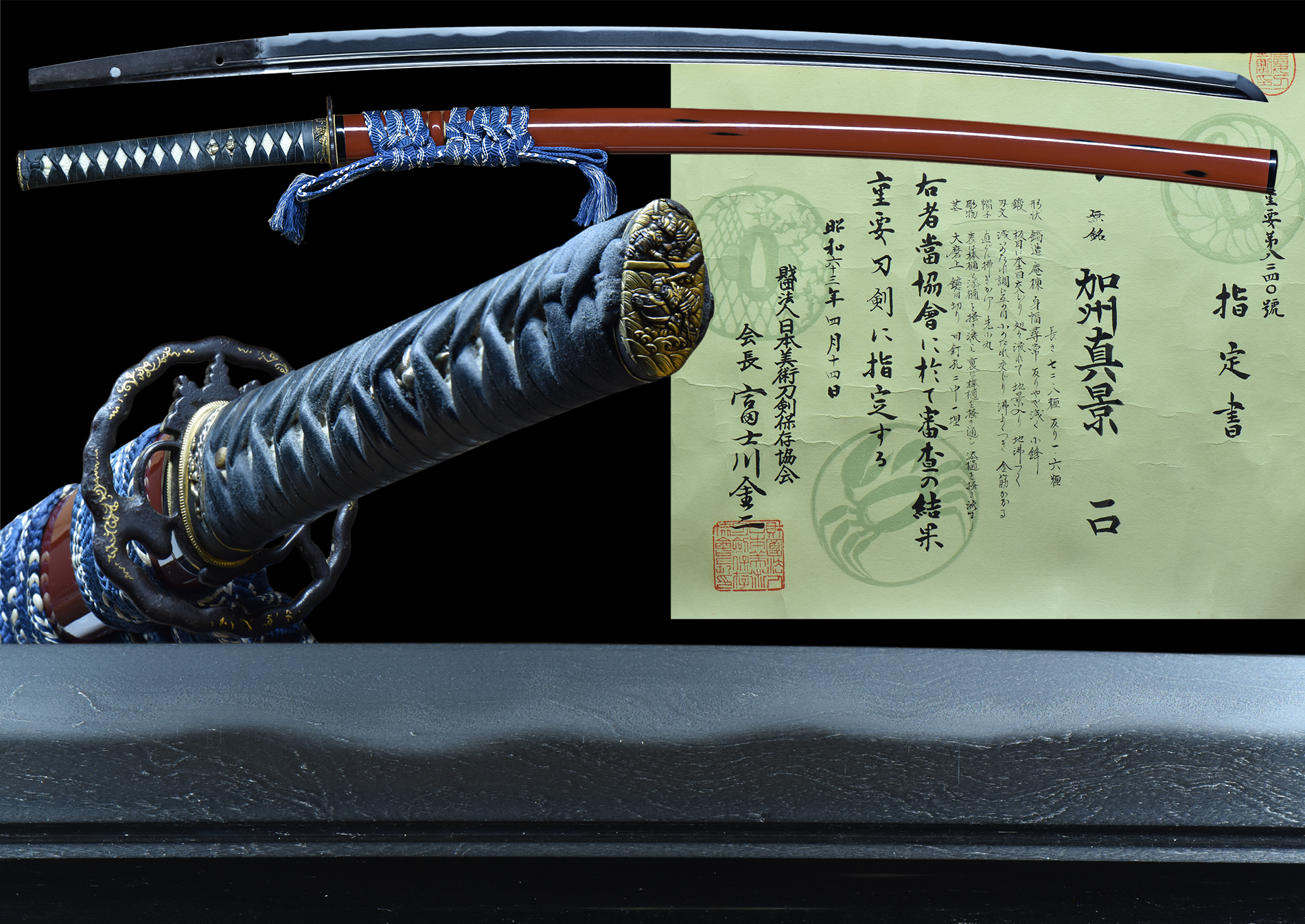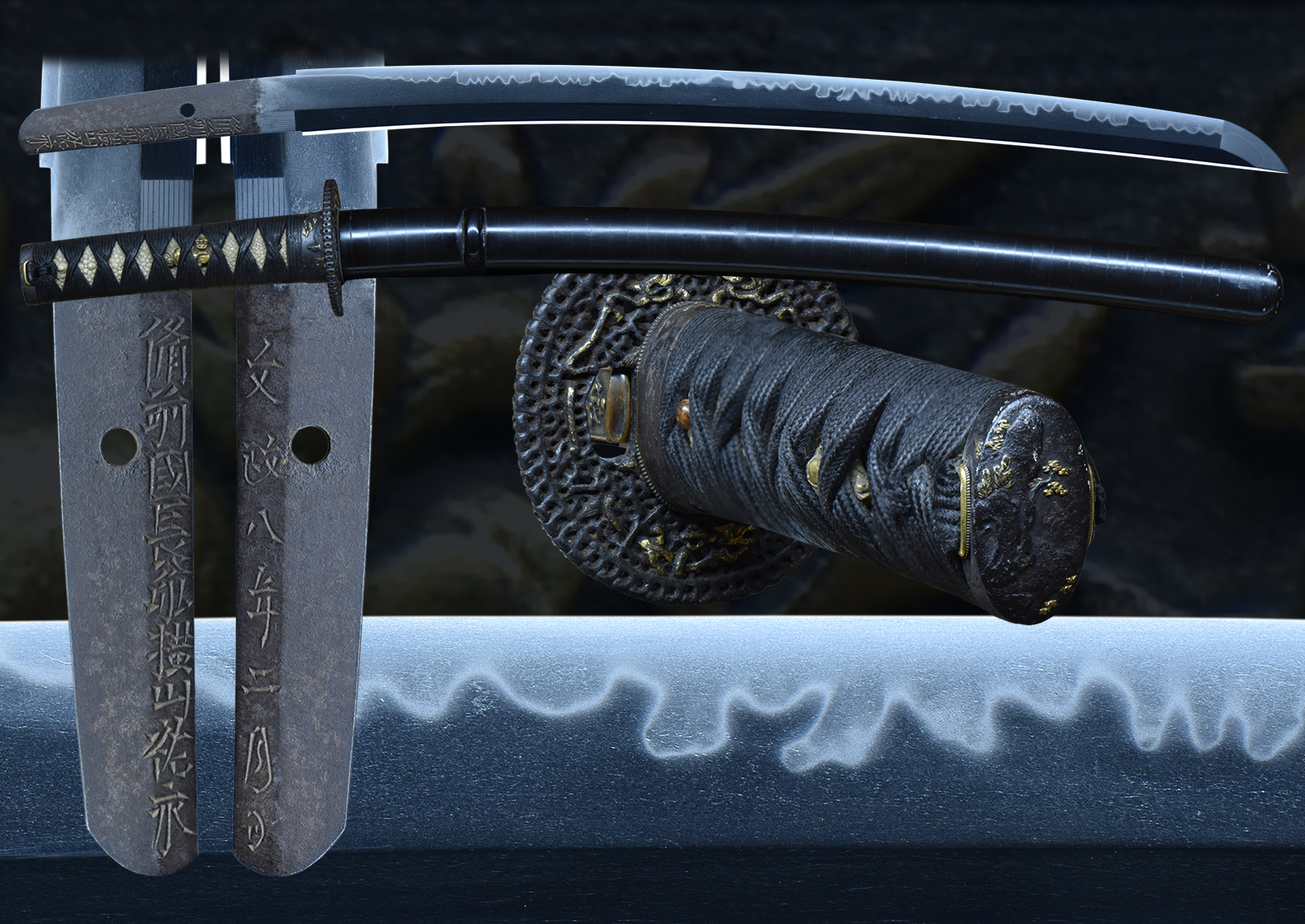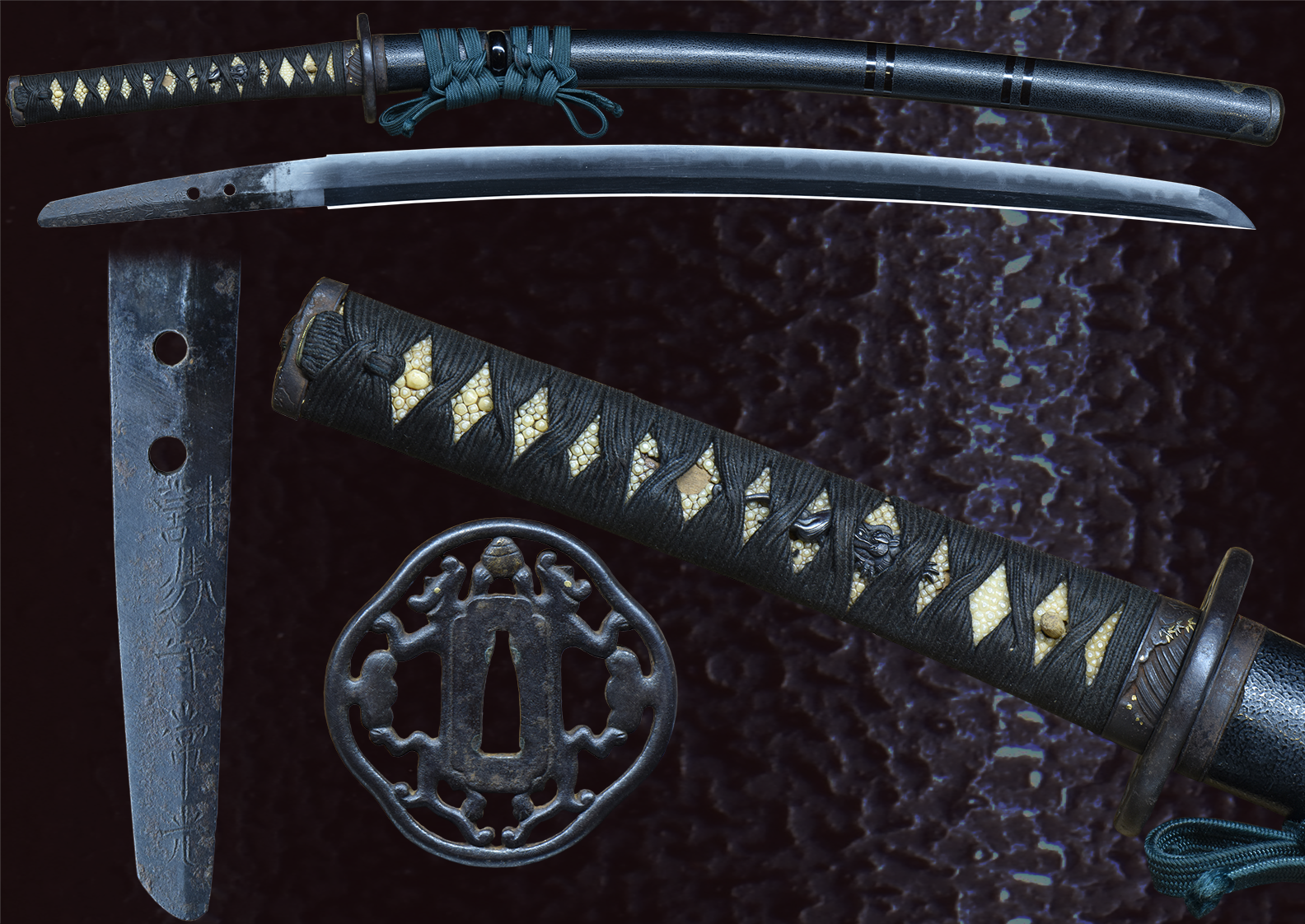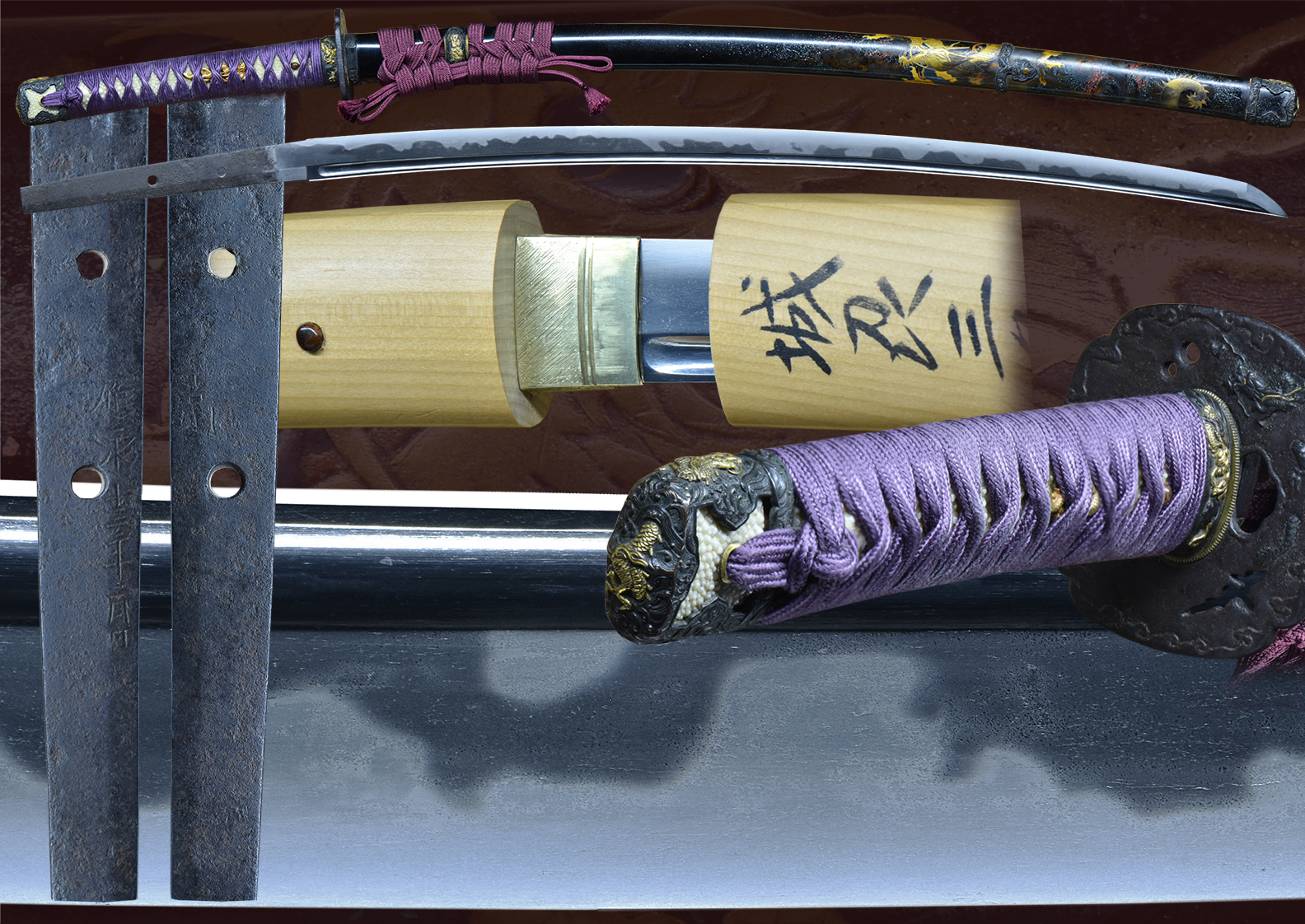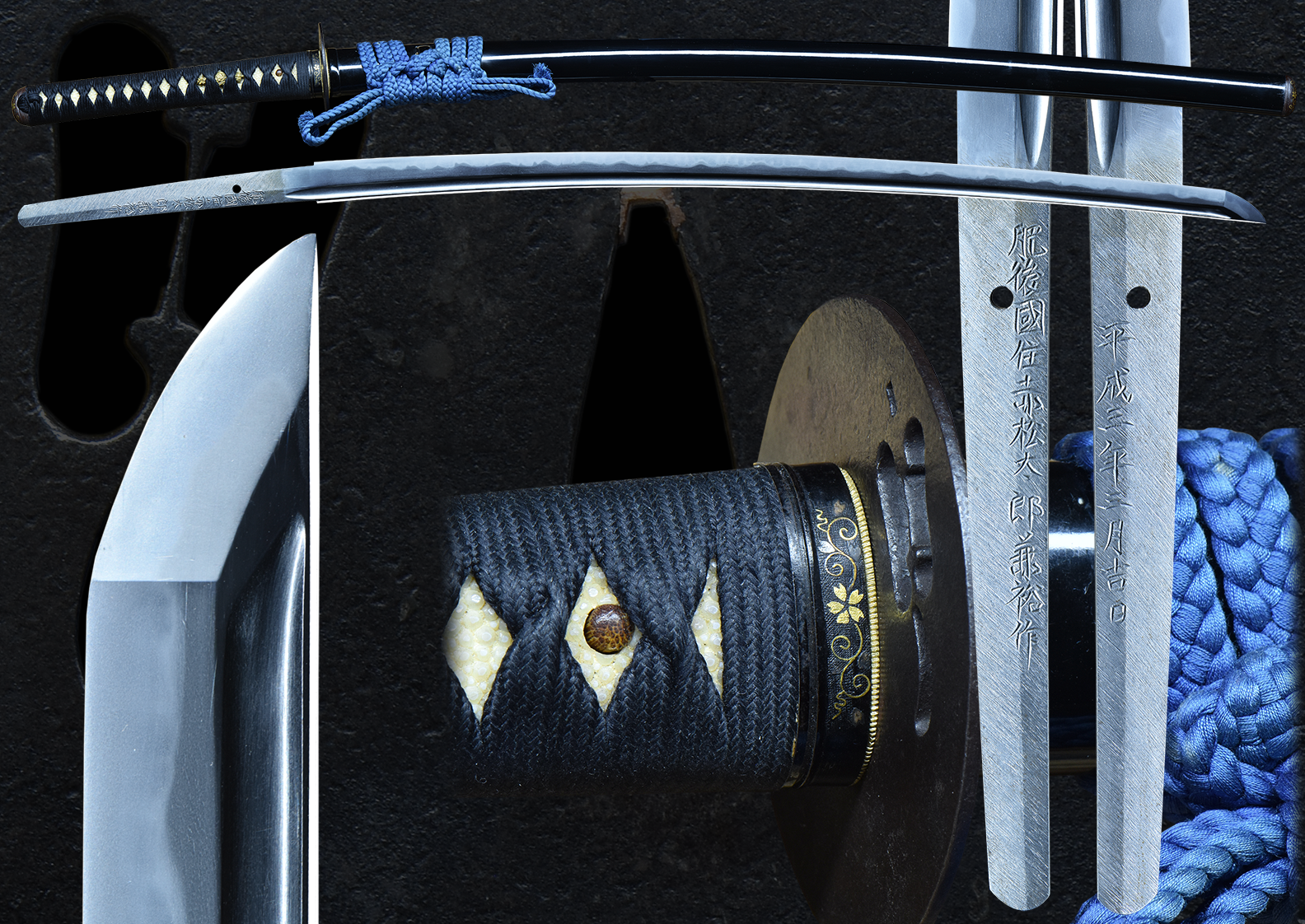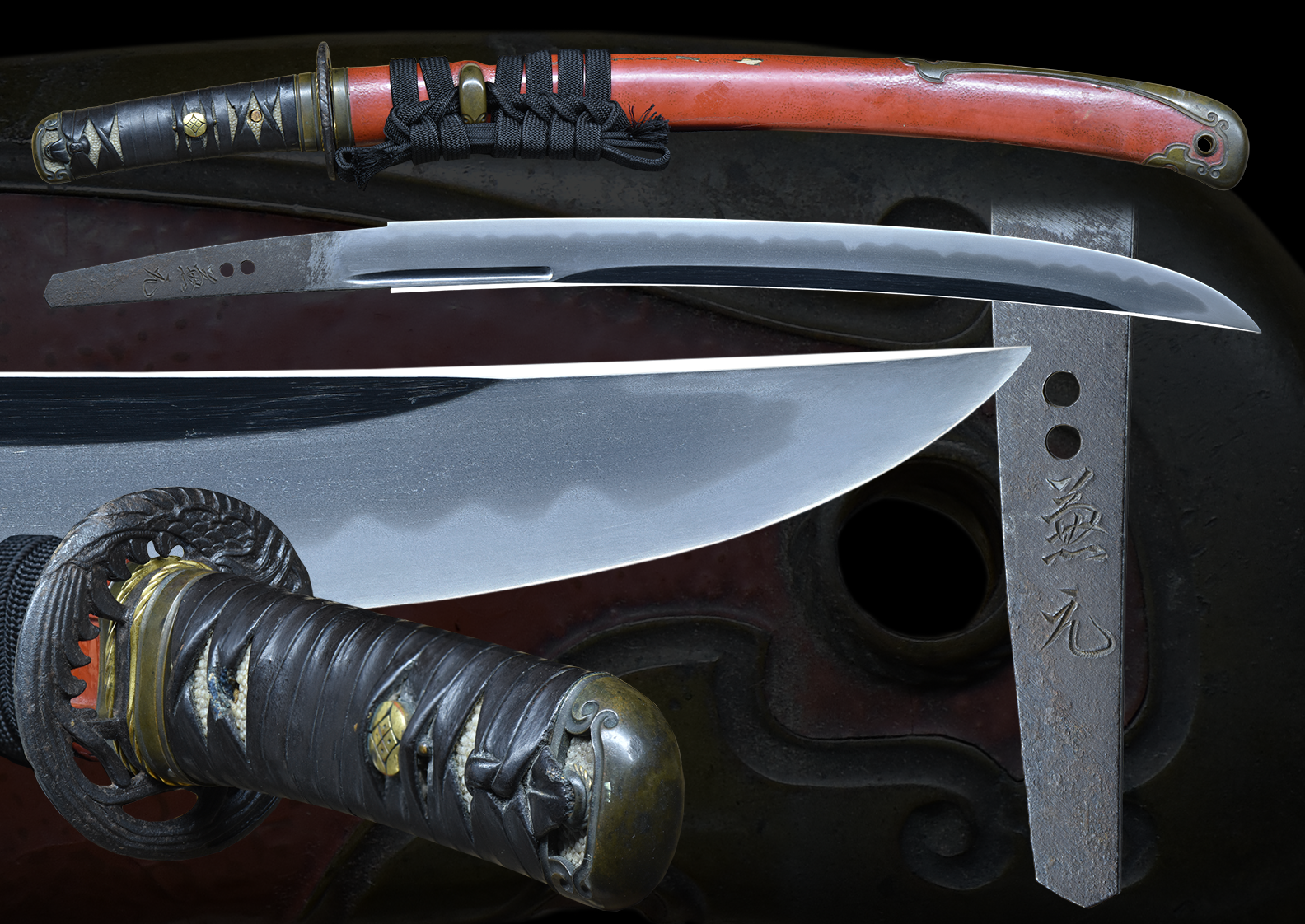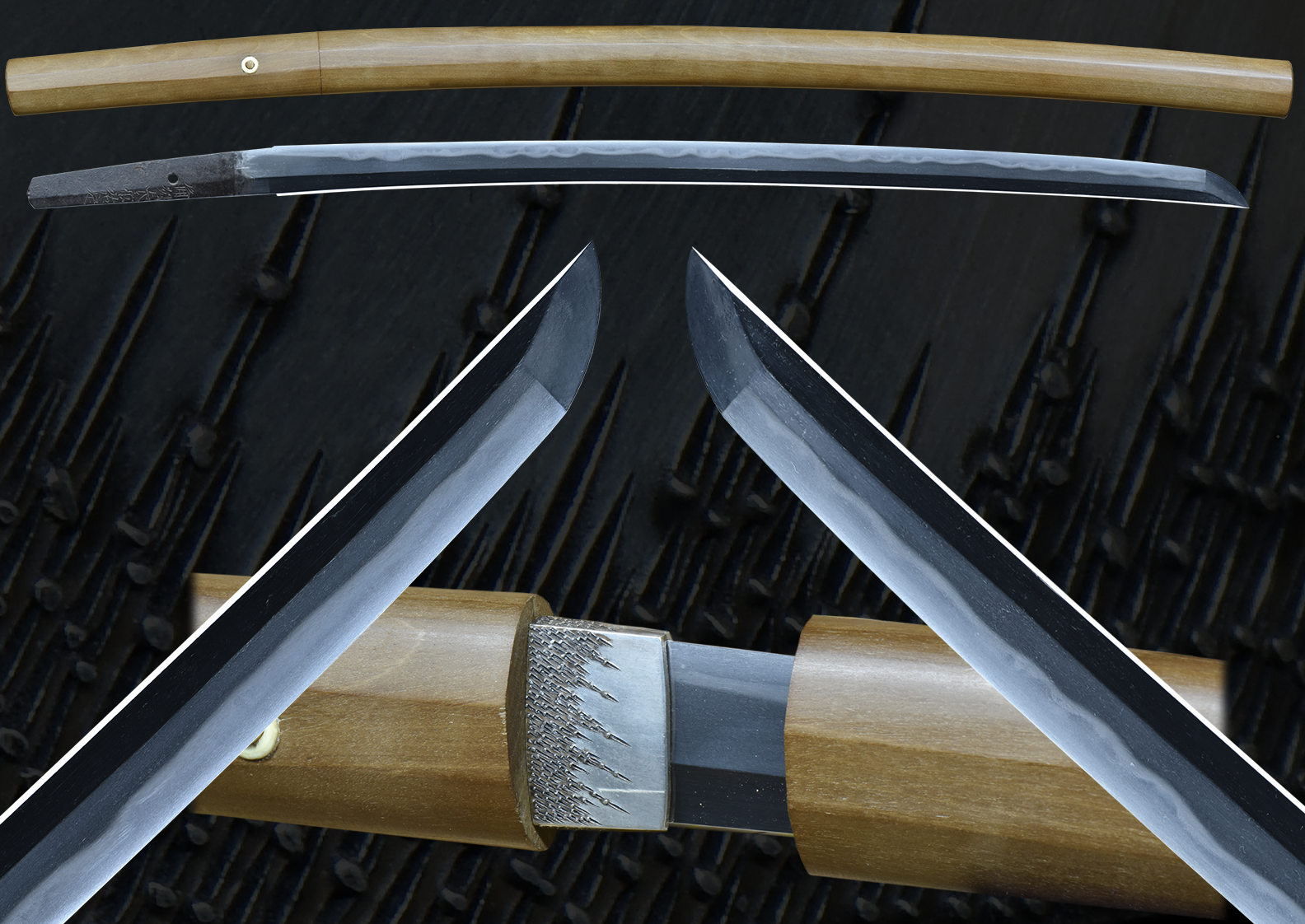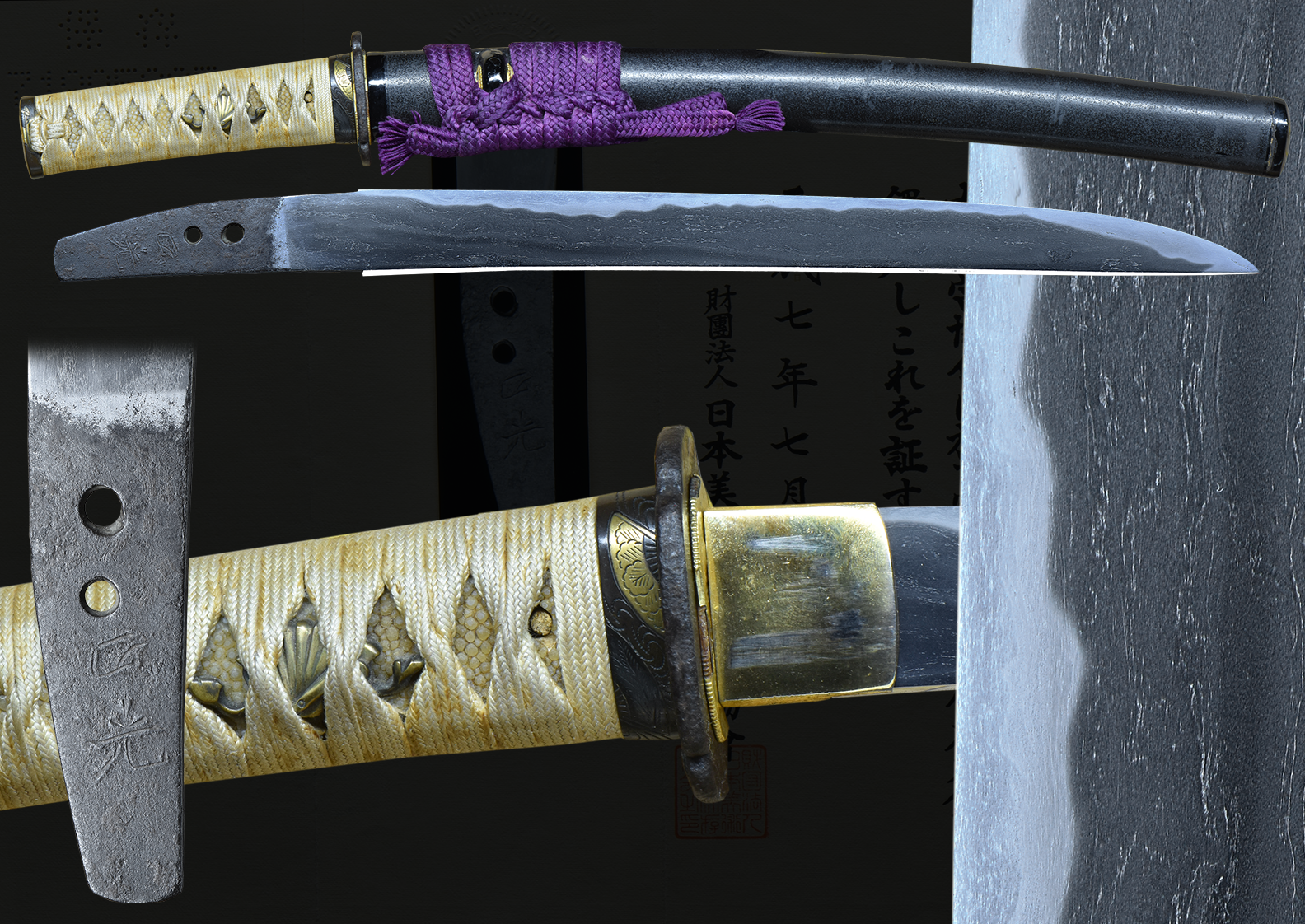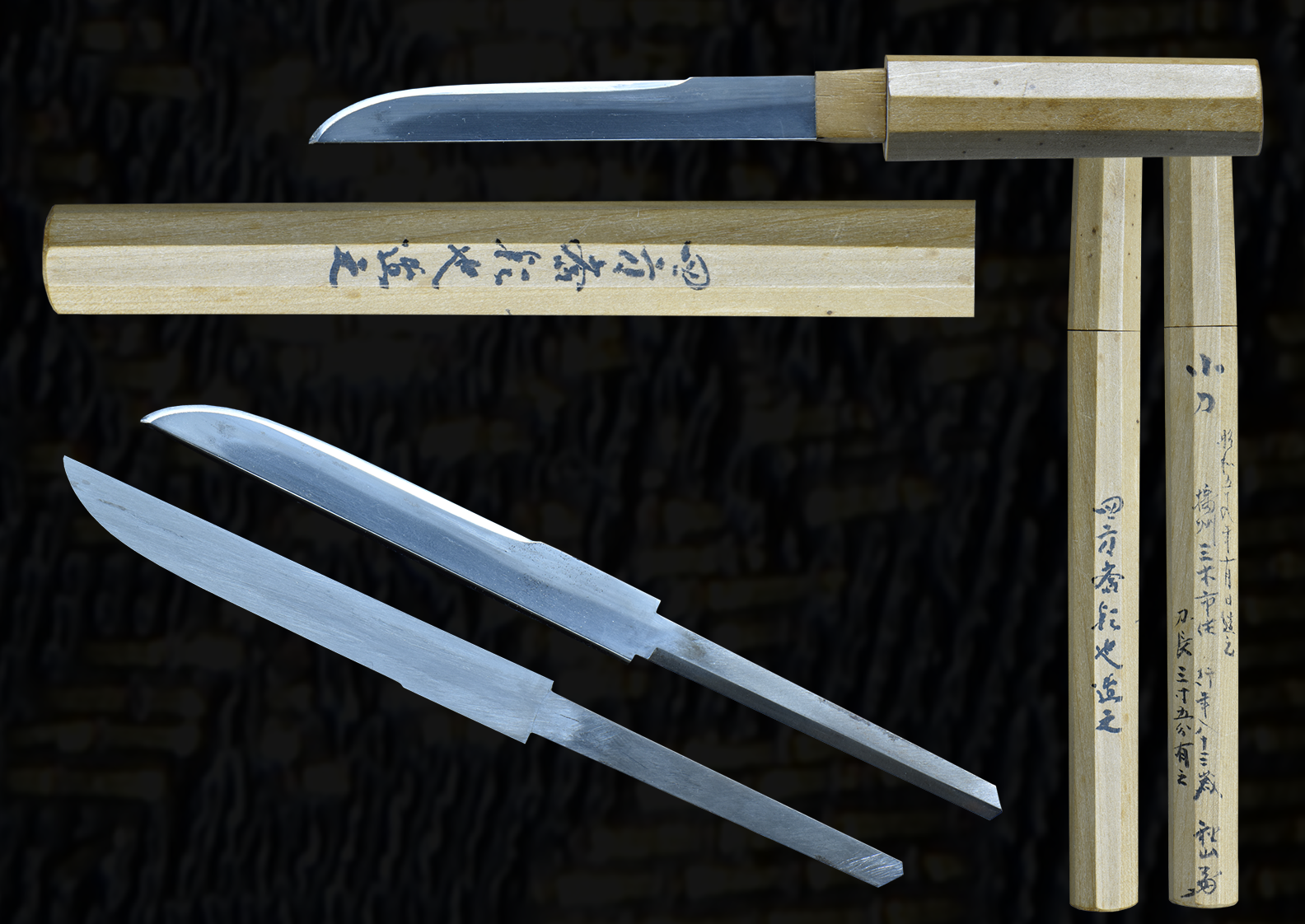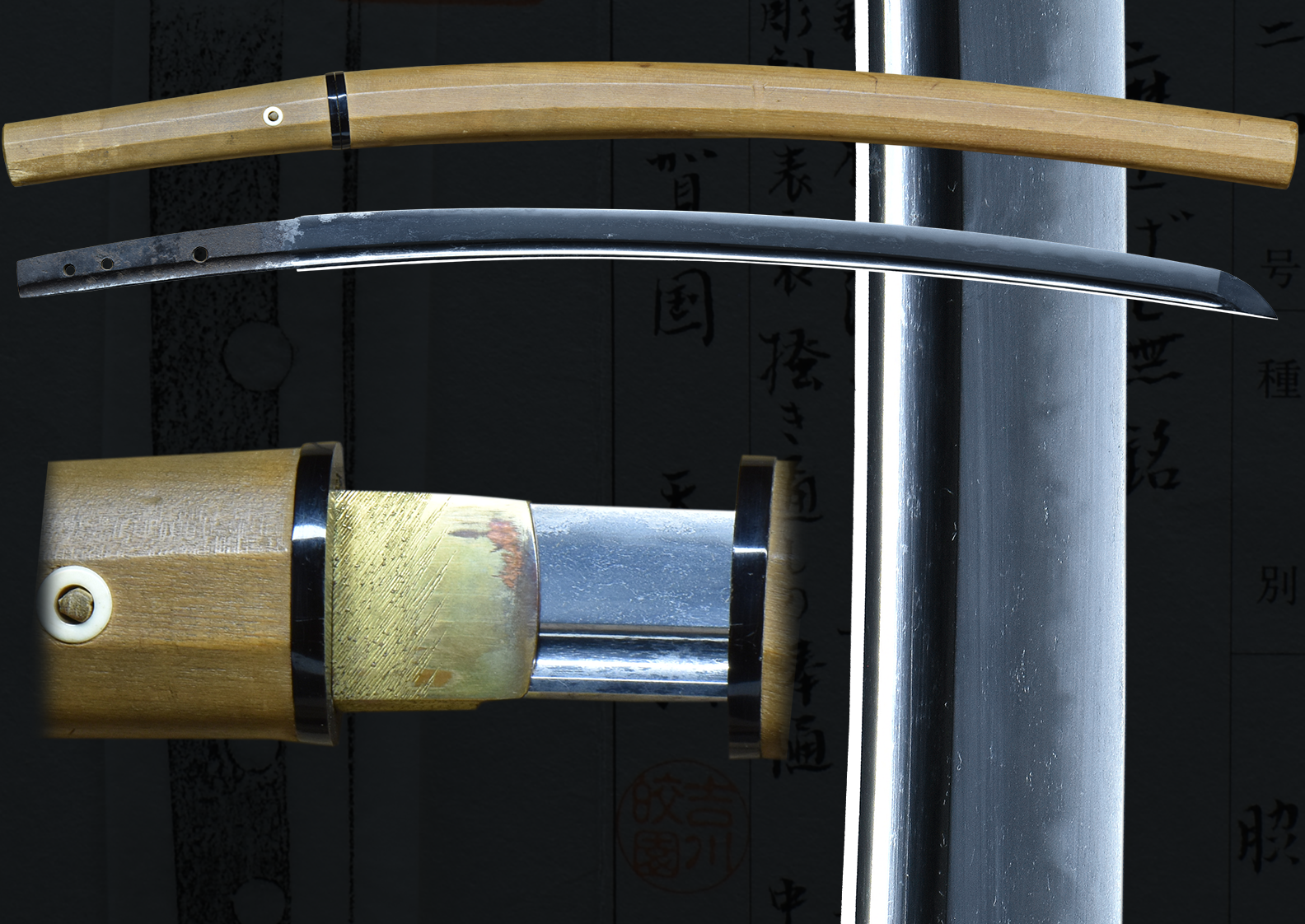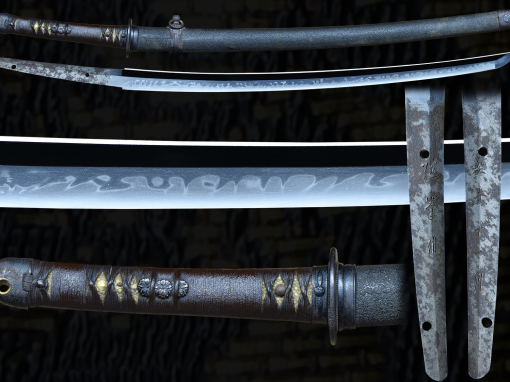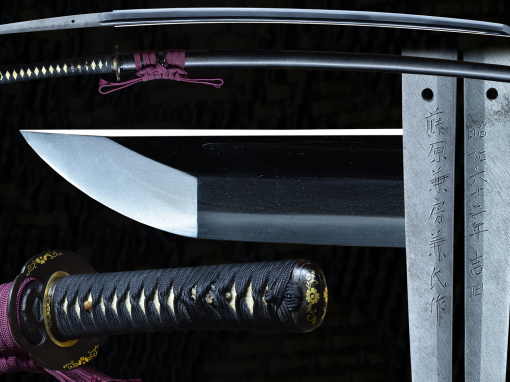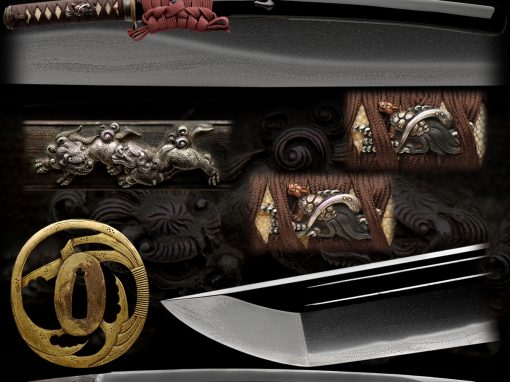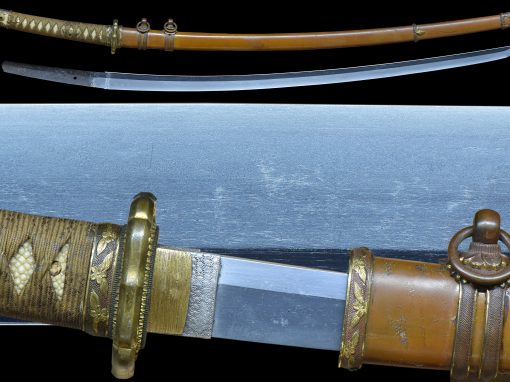A stunning Tanto in the Yamato Tegai tradition. This blade has a gunome midare hamon with a splendid masame hada. This blade sports a beautigul gold washed habaki and shirasaya. This blade is peppered in ji-nie as well as the hamon is frosted in a bright nie. The nioi-gucchi is broght soft with a fluffy feel. The boshi has a nice turn back in the Yamato tradition. The blade was recently appraised and for the moment we have the worksheet attesting to maker of this tanto. The papers from the NTHK should be received soon and will be forwarded to the new owner.
- Mei: Mumei
- Date: Bunki (1501-1504)
- Nagasa: 10-1/8 inches
- Width at the ha-machi: 22.7 mm
- Thickness at the mune-machi: 6.6 mm
- Construction: Hira zukuri
- Mune: Iori
- Nakago: Ubu
- Kitae: Masame
- Hamon: Gunome
- Boshi: Maru
- Condition: Good older polish
(shipping and insurance included)
Email us if your interested in this item and remember to include the order number for this item: fss-952.
Click to Enlarge Image
Click to Enlarge Image
During the Nara period, before the capital was transferred to Kyoto in Yamashiro province, the province of Yamato was the center of Japanese culture. According to legend, Yamato is said to have been the home of Amakuni and Amakura, the earliest swordsmiths. After that, the Senjuin smiths Yukinobu and Shigenobu are believed to have worked in Yamato at the end of the Heian period. The earliest confirmed time of manufacture for a sword with a signature from this province, however, is the middle of the Kamakura period.
The development of the sword smith trade in Yamato was closely linked to the area’s proximity to the capital at Nara. Furthermore, a smith’s prosperity and protection depended on their relationship with the temples with which they were affiliated. From the end of the Heian period, temples in Yamato province acquired vast manors and many branch temples. Accordingly, they strove to arm themselves to guard their rights and property. The five major Yamato schools, the Senjuin, Tegai, Taima , Hosho, and Shikkake , were groups of swordsmiths who supplied the temples with arms. The Yamato tradition of sword making became known over a wide area through the nationwide organizations of these temples.
The Yamato tradition exercised great influence on the Shizu, Akasaka Senjuin, Uda , Mihara, Kanabo and other schools. In addition, direct exchange seems to have taken place between individual smiths from Yamato province and smiths throughout Kyushu in the early days of the Yamato tradition.
The Yamato Tegai school got its name from the fact that its workshop was built in front of the gate Tengai-mon belonging to the Todaiji Temple in Nara. The first generation Kanenaga who worked around 1288-1293 is known to be the founder of the Yamato Tegai (大和手搔) school of sword making. The smiths of this school all used the same character. “Kane” in their works. Some of the other smiths were Kanekiyo (包清), Kanetsugu(包次), Kanetoshi, and Kanemitsu . One of the later smiths, Kaneuji (包氏), left the Tegai tradition to study the Sôshû tradition with Masamune. He later moved to Mino and founded the new sword making tradition of Mino. Around then he changed the character “Kane” in his mei from to ,the one we are familiar with for all succeeding Mino smiths. Tegai Kaneuji was also known as Shizu . We call swords made by Kaneuji while he was living in Nara, Yamato Shizu swords.
Of the smiths of this school, the first generation Kanenaga left a fair number of signed examples of his work. Most have been greatly shortened with the two characters of his name being found at the very bottom of the nakago. There are only two known examples of intact nakago surviving and, unfortunately, one of them has been re-tempered. The works of the first generation Kanenaga are known to be the best the school produced. The name, Kanenaga , was used by succeeding generations of smiths.
The Yamato Tegai school continued to produce swords from the Kamakura through the Nanbokuchô eras. At the end of the Nanbokuchô period, the school ceased to be active. However with the start of the Muromachi period, it once again became active and began to prosper. The revived school is called the Sue-Tegai school. We will discuss this later school in a bit.
More than any of the other four schools of the Yamato tradition, the Tegai school swords most closely follow what we call the traditional Yamato characteristics. Below I have outlined the most important of those characteristics:
For Sale
